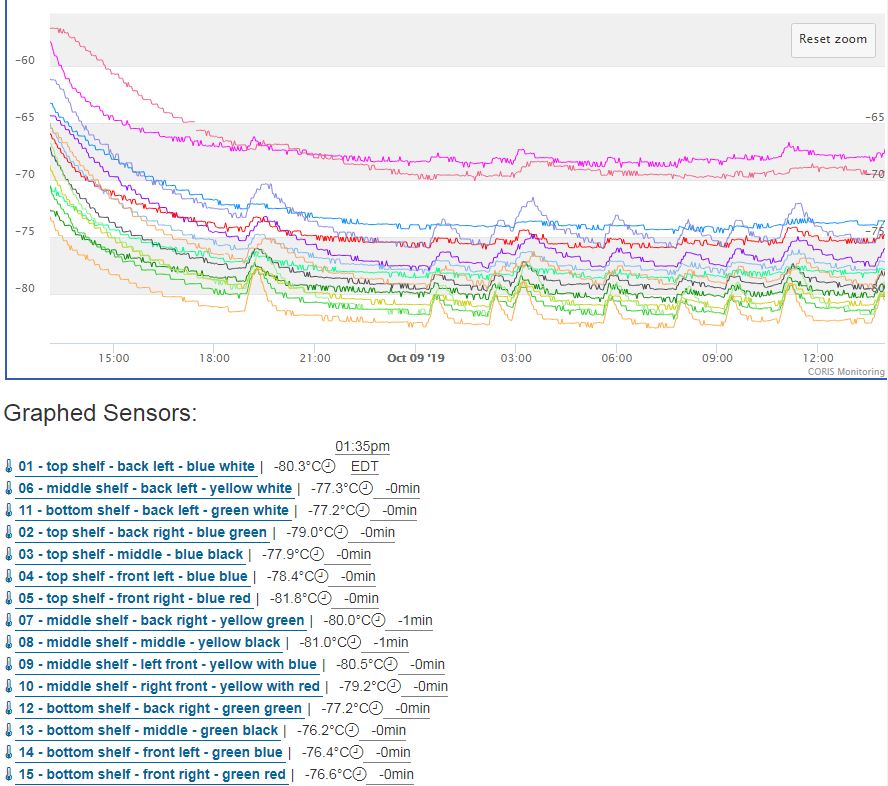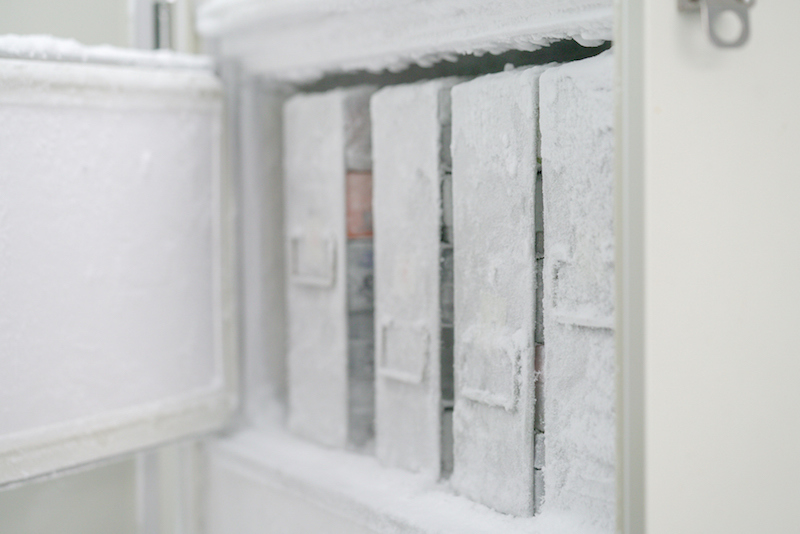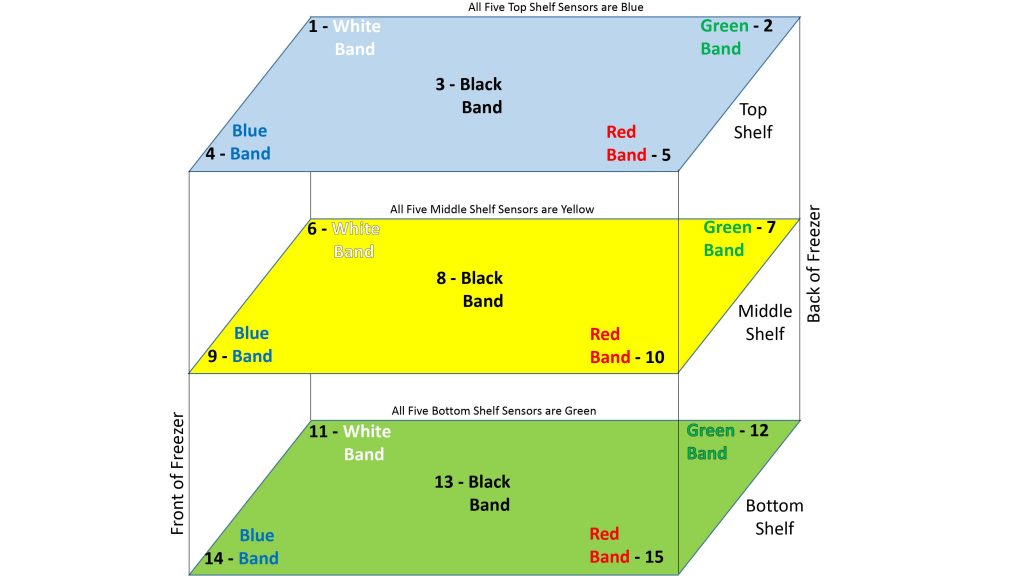Location matters not just in the sense of where you situate your lab freezer, but also where your temperature probe is placed inside the appliance. With the proper placement, you’ll have a clear, accurate understanding of the temperature inside your freezer; without it, you can remain in the dark as to potentially devastating freezer temperature issues.
To stay on the right side of this equation, you’ll generally want to place temperature probes at the top of the lab freezer — and here’s why.
Quick Links
The Science Behind Temperature Probe Placement
Temperature probes for -80℃ laboratory freezers measure the current temperature at the very tip of the probe — so proper placement of the probe tip ensures you measure the temperature where it matters most. Since there are wide temperature differences within a normal -80℃ freezer (usually at least an 8℃ difference between the warmest and coldest areas of the appliance), it is best to place the probe in the warmest part of the freezer, which is typically near the top since warm air rises. Detailed temperature measurements of various sections of your freezer — what’s known as temperature mapping — will identify all the warmest and coldest parts of your lab freezer.
Freezer Temperature Mapping

To put this into perspective, let’s use the example of an 8-year-old Revco -80℃ freezer at a major university medical center. A temperature mapping exercise indicated a 15℃ difference between the warmest and coldest regions inside the freezer — a range that stretched from -83.5℃ to -68.7℃. The temperature displayed on the front of the freezer was -79℃.
Some biomolecules (e.g., RNA) have a recommended storage temperature of -80℃ and may degrade if stored at higher temperatures. If kept in a relatively warm portion of the freezer — for instance, the freezer section that is -68℃ most of the time — the temperature is often going to exceed -65℃ whenever the door is open for more than a few minutes, potentially causing the biomolecule genetic material to degrade over time.
Where to Put Your Thermometer In the Freezer
Because the warmest part of a freezer is usually near the top, many labs place the temperature probe in the top shelf, so an accurate temperature of any samples stored on the top shelf will be measured, and high-temperature alerts will be sent sooner when specimens might be at risk. Most freezers have an access portal for temperature probe insertion into the freezer in the back wall of the freezer and near the top of the appliance. Eppendorf and a few other brands have the portal in the top of the freezer, near a back corner.
In the case of -80℃ freezers manufactured by Stirling, the probe access portal is located on the left side of the freezer, near the door, and near the top of the appliance. Having the probe tip near the front of the freezer makes it more sensitive to temperature shifts due to door openings, but it is especially important to make sure the portal is tightly sealed once the probe is in place. To this end, Stirling provides rubber stoppers for each end of the portal, which may need to be scored or drilled for the probe wire, so that no room air can get through any gaps around the stoppers. What’s more, Stirling can provide a special “putty” material for insulating the portal.
As a means to prevent room temperature air from entering the freezer cavity, the portals tend to have insulation inside them and plastic caps on both ends. After inserting the probe into the freezer via the portal, it is important to verify that both caps are in place and that the insulating material is back inside the portal.
At CORIS, we pride ourselves on pairing our state-of-the-art remote temperature monitoring system with advice on how to make the most of your investment. To learn more about our system and the service we provide, fill out the contact form on our website and we’ll be in touch.






